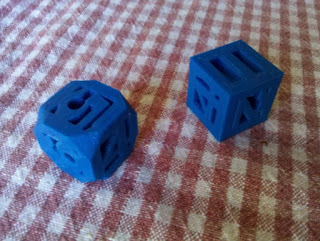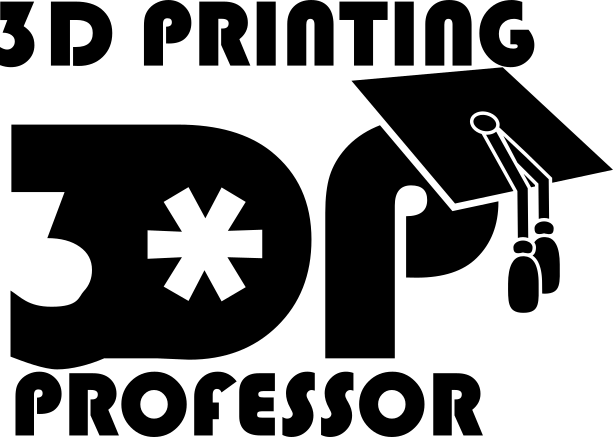If you don’t have a 3D printer you can still take advantage of 3D printing to make cool things and solve problems, and you don’t have to break the bank to do it. You just have to have a little bit of knowledge about 3D printing processes before starting. The key is the more you can do yourself, the more you’ll be able to save.
The first question is where will your 3D models come from? How exactly to find 3D models will be covered in a later chapter, but it’s important to know where you’re getting the models to 3D print. Downloading a model online generally is the cheapest and easiest way to get started. Sometimes you can even be sure the model works because you can see that others have printed it. There are tens of thousands of 3D models available online. For some people wanting to print a specific model is what got them started in 3D printing. However, maybe the model you want doesn’t exist yet. In that case it’s best to do the modeling yourself. Learning a 3D modeling program and using it will save a lot of money. How to model for 3D printing will be covered in later courses. However if you’re doing a project for an organization that can afford it, then hire a designer. They’ll produce professional quality work that you can have confidence will work.

For this chapter an example model will be used called the Hollow Die. This model has been optimized to print on home FFF 3D printers without supports, though it pushes the bridging quite a bit, and doesn’t require a lot of build material. You can download this model yourself by following this link:
https://pinshape.com/items/30195-3d-printed-hollow-3d-printed-die
So now that the topic of where models will come from has been covered, let’s get back to how to get them 3D printed.
Know the different types of 3D Printing
There are different types of 3D printing, knowing which one will work best for your model may limit how you can 3D print it. Each type of 3D printing has it’s strengths and weaknesses and what you’re trying to print may not work well with the 3D printing process you’re hoping to use, and using the wrong type of 3D printer can result in an unsatisfactory result.
The example dice model mentioned above works well in the cheapest 3D printing process, FFF 3D printing. However, many structures that require internal support or have thin parts or complex shapes may require a process that has less restrictions, but will come at a higher cost or take longer to produce.
If you don’t already have a lot of knowledge about this topic, an in-depth exploration of the different types of 3D printing will occupy a whole chapter later.
Know your 3D model and what 3D Printing Process it will work with
If a model was not designed with the limitations of a specific 3D printing process in mind it may be a challenge to get an acceptable print out of it. For instance, printing in FFF works best with a flat bottom, gentle overhangs, and where supports are necessary, the more contact area the better. Small details that require supports often result in disappointing surface quality. Again, a full exploration of the guidelines for successful FFF printing will be covered in a later series. For other processes making walls too thin, or not taking into account tolerances that are necessary for parts to meet well can result in needing to redesign and reprint.
Of course, if the model has existed before and someone has successfully printed it, you can have the greatest confidence in its success. However, any untested model will have a degree of risk associated with it. With any untested model it’s probably a good idea to expect at least one redesign. Still, a little knowledge will go a long way towards saving on reprints and money.
Volume generally affects price the most
Most printing services calculate price by starting with a setup fee, then adding an additional price per volume unit. This is why, as things get a little bigger, the price goes up considerably. For example, if a print is made twice as big, it’s not just wider, it’s also longer and taller. Consider a cube, then consider how many cubes could fit inside a cube that was double in size.
The new cube is eight times the volume of the original! So a 3D model that has double the size may cost up to eight times as much to print.
Most CAD or 3D modeling software have tools to calculate the volume of the part. Many slicers also have tools for calculating volume. In lieu of complex tools, simply measuring the height, width, and length of the model and multiplying them together can give an upper limit to the volume, and then an estimate of the percentage of the space it fills can give you an idea of the volume of the part.
For 3D printing services with expensive printers, tricks like hollowing out the model (making it be just a hollow shell with a fixed wall thickness) can save a lot of money on the print. For FFF prints, that is not always the best idea, as it can introduce areas that need internal supports that can be difficult to remove without damaging the model. Scaling down the model may work unless specific tolerances are needed or small details need to be preserved.
For the hollow dice model example, it’s a cube with 2cm long sides which would produce a maximum volume of 8cm3. However, the hollow spaces bring the actual volume to 4.9cm3, so it only fills a little more than half it’s bounding volume.
Estimate your price
Now that you know what process you’re going to shop for and the volume of the print, the next step is to estimate the price. 3D printing services tend to be closed lipped about their specific printing prices and it can be affected by which material is being used, whether supports are necessary, and if any post processing will be needed.
Generally 3D printing on a home or prosumer FFF in ABS or PLA is the cheapest, many only charging a little more than the cost of materials. Professional FDM printing is the next most expensive, followed by powder process like selective laser sintering (SLS) or liquid polymerization processes like stereo lithography (SLA) are more expensive, and Direct Metal Laser Sintering (DMLS) is the most expensive. Powder based processes have less design restrictions than FFF, FDM, or SLA, though professional FDM processes have excellent dissolvable supports that almost eliminate design limitations in their own way. And liquid polymerization captures small details the best.
The example hollow dice runs about $5 or $6 for prosumer FFF 3D printing, SLS is about $20, SLA processes come in at about $25, and DMLS comes in between $30 and $35.
Shop Around
There are many 3D printing services available. Some are set up to take your 3D model and give you an instant estimate. Going through these services is quick and easy, but you’ll pay a premium for that ease. But the cheapest way to get 3D prints is usually a tried and true method known as “I know a guy“.
Home and prosumer FFF 3D printers are more present than ever. Chances are someone in your area has one. But you have to find them. Some are listed on services like 3DHubs or MakeXYZ. Others a google search for “3D Printer” and your area will turn up some surprising results. Colleges and local libraries have 3D printers that the public can use. An online search will find them. Building a personal relationship with someone who has a 3D printer is the best way to get 3D prints without the expense of a 3D printer. I don’t know anyone who has a 3D printer that will say no if you hand them an STL to print, especially if you have some confidence that it will print on their printer. Plus, having someone local can often save on shipping.
Of course all this planning isn’t worth a thing without the last step.
Pull the trigger
Go ahead and make the purchase. Even if it’s a little more than you expected get over that sticker shock and make the purchase. Don’t compare the price to a comparable mass manufactured item. 3D printing is custom manufacturing made on demand, expect that it will cost a little more. Plus, it’s still cheaper than buying a 3D printer. So do it, make the purchase.
There is nothing so educational about 3D printing than actually holding a physical print in your hand. Seeing how the model is translated by the 3D printing process, discovering it’s nuances and limitations by exploring the print will provide you information that no book or video will. 3D printing is a theoretical process, it’s real and has to be made real to understand it. And making it real will be the best way to decide if you need to buy a 3D printer, or fail early without spending money you’ll regret.
Owning a 3D printer is not the only way to use 3D printing. And holding off on the expense of a 3D printer, both in time and learning, will give you more information about whether 3D printing is for you. Maybe, once 3D printing is made real for you you’ll decide that it isn’t worth it and you’ll be glad you didn’t start by buying a 3D printer.
On the other hand, maybe you’ll look into this first print and see 100 more prints down the road, in which case owning your own 3D printer will be the best decision you ever made.
Additional reading:



